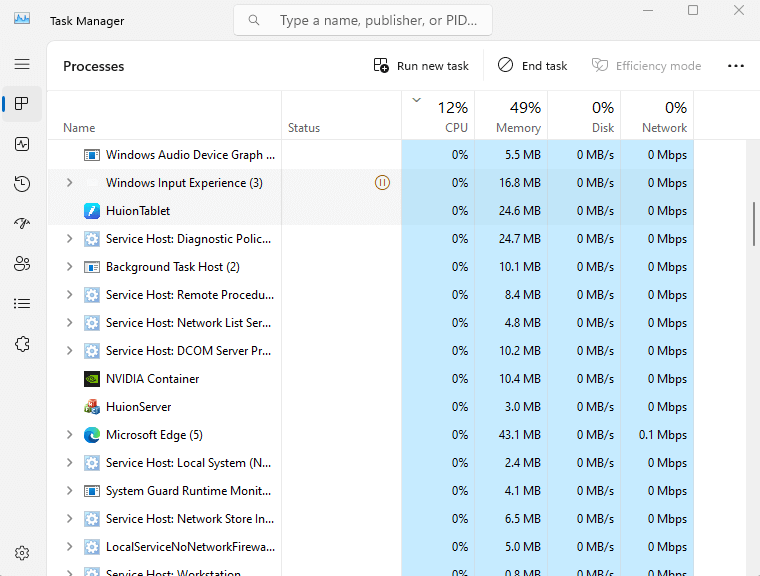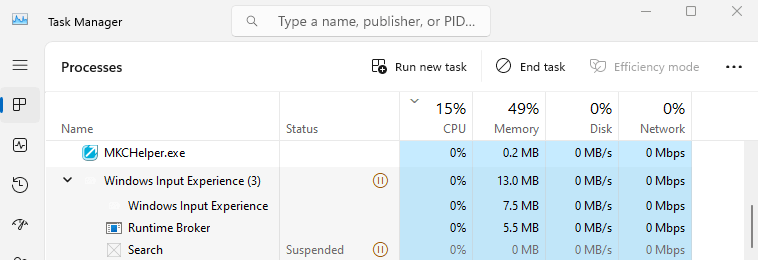The Windows Input Experience is a little-known Windows service that often runs in the background. But why is it there, and what can you do about it?
While the process is meant to run silently in the background, it sometimes starts eating up PU or memory. Such high-CPU usage issues can slow down your computer.
A Mysterious Process
Like every version of the Windows operating system, Microsoft Windows 11 comes with a bunch of system services that run in the background, keeping your PC functioning smoothly. One of these services is the Windows Input Service.
But unlike other services, it is not very clear what the Windows Input service even does. It is not even listed on the Services list.
At the same time, you will always find it running in the Task Manager, often with multiple sub-processes under it. The CPU and memory usage should be minimal, though sometimes errors can occur and push it to a significant amount.
The Purpose of Windows Input Service
Contrary to what its name suggests, the Windows Input service doesn’t seem to be involved in managing user input. There are other dedicated services for dealing with input methods and devices like keyboards.
It has been speculated that it links with the on-screen keyboard or widgets, but there is no definite evidence of either. Most forums looking to troubleshoot problems with the Windows Input Experience service are just throwing ideas out to see if anything works.
If you expand the tasks under its ambit in the Task Manager, you will notice a service named Search listed below it. Sometimes it is the other way around, with Windows Input Service listed underneath Search.
This seems to indicate that the Windows Input service is related to the functioning of the Search function. It also explains all the CPU usage errors – Search is notorious for causing such bugs when a search gets stuck sifting through the disk, or comes across an inaccessible sector on the drive.
So What Should You Do About Windows Input Experience?
As the Windows Input experience is not malware but a legitimate Microsoft process, there is no harm to your PC posed by it. It performs an important function, and in the normal course of activity barely consumes any resources.
So just leave it be. In case it seems to be causing any bugs like high CPU or disk usage, you can try ending the process from the Task Manager and restarting your PC. Ending the Search process can also solve the problem.

